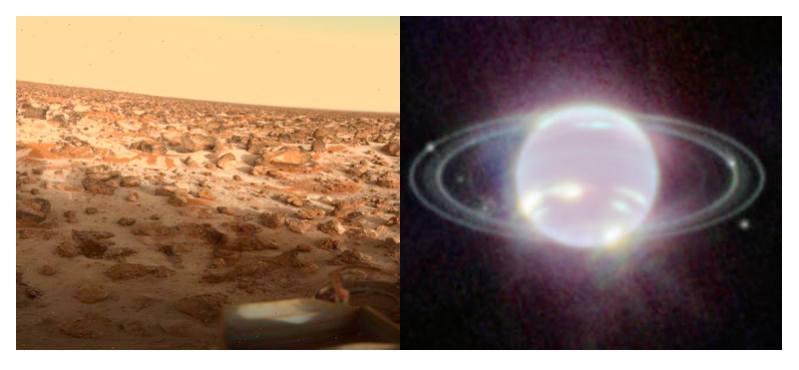[Le LMD publie] Two PhDs defended among the Planeto team

Joseph Naar defended his Ph.D. on the modeling of the current water cycle and the last ice ages of the planet Mars on October 26, 2023. Mars, as we know it today, resembles a cold desert. However, a massive water glacier is located at the North Pole and releases a small amount of water into the atmosphere every summer, which can then be transported across the planet, forming clouds, surface frost, etc. Modeling this water cycle is nonetheless extremely complex. Joseph thus improved the numerical representation of the physical processes governing this cycle in the Mars Planetary Climate Model developed at LMD. In parallel, Joseph also studied the ice ages of the planet Mars. Although it is now icy and dry, geological traces on the surface of the red planet show that Mars has been wetter in the past, conducive to the formation of glaciers near the tropics, and a much more active water cycle, etc. By varying the orbital parameters of the planet (obliquity, eccentricity, etc.), Joseph was able to show with this model that about a million years ago, when the obliquity of Mars was greater, the planet was very wet and a snowy mantle several meters thick could form at low latitudes, burying over time, where geological traces suggest the presence of an ancient massive ice reservoir. His thesis is the first of the Mars Through Time program aimed at better understanding Martian paleoclimates. He is now a postdoctoral researcher at the Laboratory of Atmospheres, Spatial Observations.
Gwenaël Milcareck defended his Ph.D. on the atmospheric modeling of Uranus and Neptune on November 20, 2023. These two giant ice planets hold mysteries that fascinate scientists. In 1986 and 1989, Voyager 2 explored Uranus and Neptune, revealing an almost identical zonal circulation despite different seasonal forcings and a much warmer thermal structure than previously thought. Gwenaël thus designed a global climate model (GCM), adapted from terrestrial and planetary models already developed at LMD, to better understand the atmospheric dynamics of these bodies. Gwenaël was able to show that the warm temperatures observed on Uranus could be explained by the radiative properties of aerosols in the atmosphere, but that this explanation was not sufficient to reproduce the Neptunian observations. Finally, Gwenaël showed with his model that a complex zonal and meridional circulation on Uranus and Neptune is established on these two planets. His thesis is a cornerstone in the study of the atmospheric dynamics of these two bodies and opens the way to many perspectives to improve our understanding of planetary climates. He is now a postdoctoral researcher at the Bordeaux Astrophysics Laboratory.
Credits: Left: NASA / JPL / Ted Stryk Right: NASA/ ESA/ CSA/ STScI

